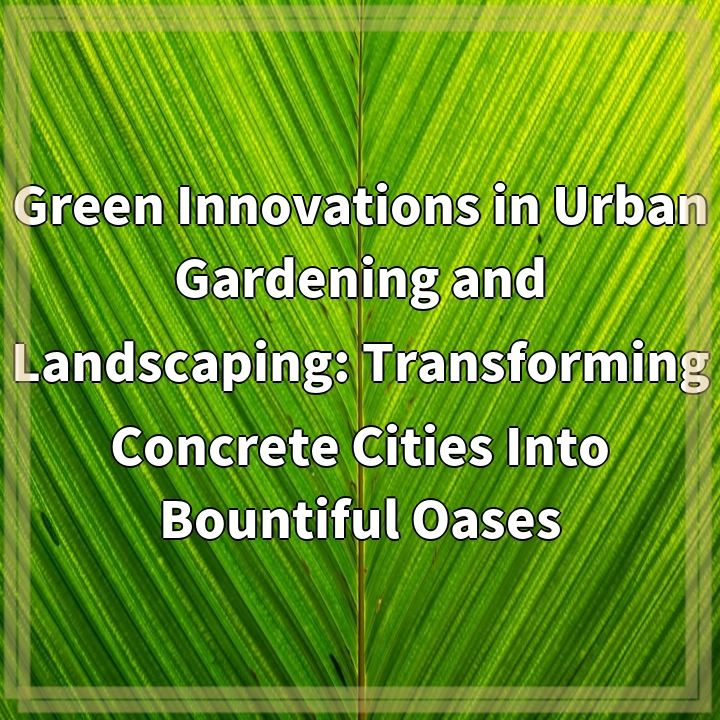
What it is:
Contemporary sculpture is a form of artistic expression that pushes the boundaries of traditional art, allowing artists to create unique and thought-provoking pieces. In recent years, there has been a growing interest in sustainable approaches within the field of contemporary sculpture. This involves incorporating environmentally conscious practices and materials into the creation, exhibition, and preservation of sculptures.
Real-World Problems Associated with Sustainable Approaches in Contemporary Sculpture:
1. Material Sourcing:
One of the challenges in adopting sustainable approaches in contemporary sculpture is finding environmentally friendly materials. Traditional sculpting materials, such as clay, stone, and metal, often have a significant environmental impact due to their extraction processes. Artists and sculptors increasingly face the dilemma of finding materials that are both artistically suitable and sustainable.
2. Energy Consumption:
Creating large-scale sculptures often requires the use of heavy machinery, kilns, and other energy-intensive equipment. This can result in a significant carbon footprint. Artists incorporating sustainable approaches must find ways to reduce energy consumption, such as utilizing renewable energy sources or optimizing energy efficiency in their studio practices.
3. Waste Generation:
Sculpture creation often generates waste materials, such as excess clay, metal shavings, or discarded parts. These materials can contribute to landfill pollution if not properly managed. Sculptors committed to sustainability need to explore methods and techniques to minimize waste generation, such as recycling or repurposing materials.
4. Longevity and Preservation:
Preserving sculptures over time requires careful consideration of the materials used and their susceptibility to degradation. Climate change, pollution, and exposure to the elements can impact the longevity of sculptures. Sustainable approaches aim to find durable and environmentally friendly materials that withstand the test of time while minimizing the need for frequent restoration or replacement.
5. Cultural Shift and Perception:
Incorporating sustainable approaches in contemporary sculpture requires a cultural shift and a change in perception within the art community. This involves challenging traditional notions of what constitutes “valuable” art and encouraging artists, collectors, and institutions to prioritize sustainability and environmental consciousness in their artistic practices and decision-making processes.
By acknowledging these real-world problems associated with sustainable approaches in contemporary sculpture, artists, curators, and enthusiasts can work towards finding innovative solutions and promoting a more environmentally conscious and responsible art form.

Solutions for Sustainable Approaches in Contemporary Sculpture:
1. Material Sourcing:
Innovative solutions for sustainable material sourcing in contemporary sculpture include exploring alternative materials such as reclaimed or recycled materials, organic materials, and sustainable alternatives to traditional sculpting materials. Collaborations with local communities and artisans can also promote the use of locally sourced and eco-friendly materials.
2. Energy Consumption:
To address energy consumption, artists can incorporate renewable energy sources, such as solar or wind power, in their studios. Using energy-efficient machinery and equipment, optimizing workflow to minimize energy use, and exploring sustainable transportation options for large-scale sculptures can also help reduce the carbon footprint associated with contemporary sculpture creation.
3. Waste Management:
Minimizing waste generation in contemporary sculpture can be achieved through careful planning, efficient material use, and embracing a circular economy mindset. Artists can repurpose or upcycle materials, create sculptures with modular designs that allow for adaptability and reuse, and implement recycling and composting practices in their studios. Collaboration with local recycling facilities and waste management programs can also contribute to effective waste management.
4. Preservation and Longevity:
Preserving sculptures for the long term can be achieved by adopting sustainable and durable materials that are resistant to environmental degradation. Artists can also incorporate protective coatings, proper display and storage methods, and climate-controlled exhibition spaces to minimize the impact of weather and pollution on sculptures.
5. Promoting Awareness and Collaboration:
Shifting cultural perceptions and promoting sustainability in contemporary sculpture requires collaboration and the collective efforts of artists, curators, collectors, and institutions. Building awareness through educational programs, exhibitions, and workshops can help change perceptions and encourage the adoption of sustainable approaches. Artists can also collaborate with environmental organizations and participate in conferences and symposiums to share knowledge and inspire others to join the movement.
By implementing these solutions, the field of contemporary sculpture can become more environmentally conscious, contributing to a more sustainable and responsible art form that aligns with the needs of our planet.















